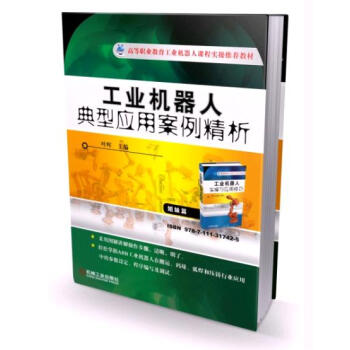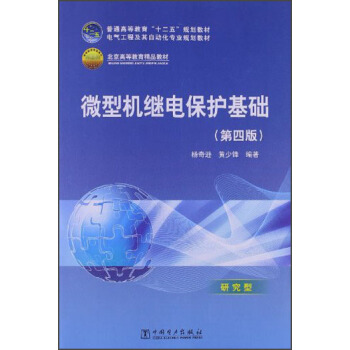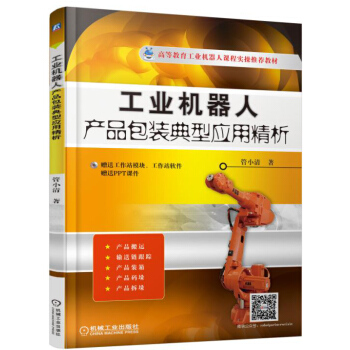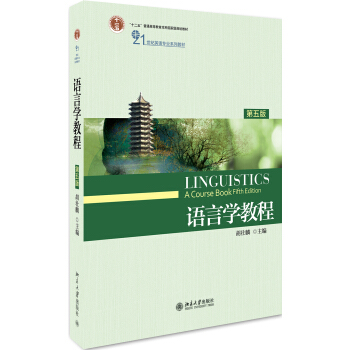

具体描述
编辑推荐
《语言学教程》自1988年首次出版以来,改版五次,印刷九十余次,发行量达二百五十万册。目前已被国内高等院校普遍作为英语专业本科、硕士语言学方向必修教材以及考研必读教材,并吸引了大量对语言学感兴趣的非英语专业读者。《语言学教程》(第五版)在第四版基础上听取广大师生意见修订而成。包括语言学理论介绍、语音、词汇、句法、语义、语言与认知、语言与社会文化、语用学、语言与文学、语言与计算机、语言学与外语教学、语言学流派等十二章。此次修订充分汲取国内外语言学研究新的理论和成果,特别是信息技术的迅猛发展带给语言学各分支的冲击性的变革和发展,更为全面而系统地阐述了理论和应用语言学领域的内容,阐述方式深入迁出、脉络清晰,利于教师课上教学和学术课下自学。
本教材另配有中文译本和练习册,并为使用该教材的老师提供免费的教学配套课件。
内容简介
《语言学教程》自1988年首次出版以来,改版四次,印刷八十余次,发行量达二百万册。目前已被国内高等院校普遍作为英语专业本科、硕士语言学方向必修教材以及考研必读教材,并吸引了大量对语言学感兴趣的非英语专业读者。是国内出名的语言学教材,具有较高的社会影响力和教学、科研认可度。此次改版,编辑部事先通过网上信息搜集、访谈等方式,就一线教师和学生对该教材的使用情况进行了调查。后经本书主编、副主编和出版社方面的讨论,一致达成如下修改方案:1. 难度上不做大的变动。2. 全书的总体框架不变,章节不变。3.根据一线教师的需求,一方面在教程中增加一些生动的,贴近生活的例子来解释、说明专业术语和理论;另一方面,内容更新,与时俱进,就近些年来语言学研究的新发展和新热点加以补充和阐释,如将近些年来很热点的认知语言学部分进行扩充等。但从页数考虑,全书增加的内容版面要限制在第四版的10%以内。4.排版时缩小行距,使用英文版式,减少页数。以便定价让学生更能接受。
作者简介
胡壮麟,北京大学资深教授、博导,系统功能语言学的代表学者,清华大学双聘教授、北京师范大学兼职博导。被42所大学聘为兼职教授或客座教授。完成专著 4部,主编7部,合著、合编14 部,译著1部、论文206篇。目录
CONTENTSChapter 1Invitations to Linguistics1.1Why Study Language?1.2What Is Language?1.3Design Features of Language1.3.1Arbitrariness1.3.2Duality1.3.3Creativity1.3.4Displacement1.4Origin of Language1.5Functions of Language1.5.1Informative Function1.5.2Interpersonal Function1.5.3Performative Function1.5.4Emotive Function1.5.5Phatic Communion1.5.6Recreational Function1.5.7Metalingual Function1.6What Is Linguistics?1.7Main Branches of Linguistics1.7.1Phonetics1.7.2Phonology1.7.3Morphology1.7.4Syntax1.7.5Semantics1.7.6Pragmatics1.8Macrolinguistics1.8.1Psycholinguistics1.8.2Sociolinguistics1.8.3Anthropological Linguistics1.8.4Computational Linguistics1.9Important Distinctions in Linguistics1.9.1Descriptive vs. Prescriptive1.9.2Synchronic vs. Diachronic1.9.3Langue & Parole1.9.4Competence & PerformanceChapter 2Speech Sounds2.1Speech Production and Phonetic Transcription2.1.1Speech Production2.1.2Phonetic Transcription—The IPA2.2Consonants and Vowels2.2.1Consonants2.2.2Vowels2.2.3The Sounds of English2.3Phonological Analysis2.3.1Phonemes2.3.2Allophones2.3.3Phonological Rules2.3.4Rule Ordering2.4Suprasegmentals2.4.1Syllable2.4.2Sonority Scale2.4.3Stress2.4.4Intonation and ToneChapter 3Words and Morphology3.1The Nature of Words3.1.1What Is a word?3.1.2Content Words and Function Words3.2Types of Morphemes3.3Morphological Processes3.3.1Derivation3.3.2Compounding3.3.3Inflection3.3.4Minor Morphological ProcessesChapter 4From Word to Text4.1Syntactic Relations4.1.1Positional Relation4.1.2Relation of Substitutability4.1.3Relation of Co�睴ccurrence4.2Grammatical Construction and Its Constituents4.2.1Grammatical Construction4.2.2Immediate Constituents4.2.3Endocentric and Exocentric Constructions4.2.4Coordination and Subordination4.3Syntactic Function4.3.1Subject4.3.2Predicate4.3.3Object4.3.4The Relation between Classes and
Functions4.4Category4.4.1Number4.4.2Gender4.4.3Case4.4.4Agreement4.5Phrase, Clause and Sentence4.5.1Phrase4.5.2Clause4.5.3Sentence4.6Recursiveness4.6.1Conjoining4.6.2Embedding4.7Beyond the Sentence4.7.1Sentential Connection4.7.2Cohesion4.7.3CoherenceChapter 5Meaning5.1Meanings of “Meaning”5.2The Referential Theory5.3Sense Relations5.3.1Synonymy5.3.2Antonymy5.3.3Hyponymy5.4Componential Analysis5.5Sentence Meaning5.5.1Cognitive Semantics5.5.2Logical SemanticsChapter 6Language and Cognition6.1What Is Cognition?6.2Three Approaches to Language and
Cognition6.3What Is Psycholinguistics?6.4Language Acquisition6.4.1Holophrastic Stage6.4.2Two�瞁ord Stage6.4.3Stage of Three�瞁ord Utterances6.4.4Fluent Grammatical Conversation Stage6.5Language Comprehension6.5.1Word Recognition 6.5.2Comprehension of Sentences 6.5.3Comprehension of Text 6.6Language Production6.6.1Access to Words 6.6.2Generation of Sentences 6.6.3Written Language Production 6.7What Is Cognitive Linguistics?6.8Construal and Construal Operations6.8.1Attention/Salience6.8.2Judgment/Comparison6.8.3Perspective/Situatedness6.9Categorization6.9.1Basic level6.9.2Superordinate level6.9.3Subordinate level6.10Image Schemas6.11Metaphor6.11.1Structural Metaphors6.11.2Orientational Metaphors6.11.3Ontological Metaphors6.12Metonymy6.12.1Whole ICM and Its Part(s)6.12.2Parts of an ICM6.13Blending TheoryChapter 7Language, Culture, and Society7.1Language and Culture7.1.1How Does Language Relate to
Culture?7.1.2More about the Sapir�瞁horf
Hypothesis7.1.3Case Studies7.1.4To What Extent Do We Need Culture
in Our Linguistic Study?7.1.5Culture in Language Teaching
Classroom7.2Language and Society7.2.1How Does Language Relate to
Society?7.2.2A Situationally and Socially Variationist
Perspective7.2.3What Should We Know More about
Sociolinguistics?7.2.4What Implications Can We Get from
Sociolinguistics?7.3Cross�睠ultural Communication7.3.1What Should We Know All about
Cross�睠ultural Communication?7.3.2Case Studies7.4SummaryChapter 8Language in Use8.1Speech Act Theory8.1.1Performatives and Constatives8.1.2A Theory of the Illocutionary Act8.2The Theory of Conversational Implicature8.2.1The Cooperative Principle8.2.2Violation of the Maxims8.2.3Characteristics of Implicature8.3Post�睪ricean Developments8.3.1Relevance Theory8.3.2The Q�� and R�瞤rinciples8.3.3The Q��, I�� and M�瞤rinciples8.3.4A Socio�睠ognitive ApproachChapter 9Language and Literature9.1Introduction9.2Some General Features of the Literary
Language9.2.1Foregrounding and the Grammatical
Form9.2.2Literal Language and Figurative
Language9.2.3The Analysis of Literary Language9.3The Language in Poetry9.3.1Sound Patterning9.3.2Different Forms of Sound Patterning9.3.3Stress and Metrical Patterning9.3.4Conventional Forms of Metre and
Sound9.3.5The Poetic Functions of Sound and
Metre9.3.6How to Analyse Poetry?9.4The Language in Fiction9.4.1Fictional Prose and Point of View9.4.2Speech and Thought Presentation9.4.3Prose Style9.4.4How to Analyse the Language of
Fiction?9.5The Language in Drama9.5.1How Should We Analyse Drama?9.5.2Analysing Dramatic Language9.5.3How to Analyse Dramatic Texts?9.6The Cognitive Approach to Literature9.6.1Theoretical Background9.6.2An Example of Cognitive AnalysisChapter 10Language and Computer10.1Introduction 10.2Computer�睞ssisted Instruction(CAI)10.2.1CAI, CAL, CALL10.2.2CALL Development and Technology10.2.3MOOC10.3Machine Translation10.3.1History of Development10.3.2Research Methods10.3.3MT and the Internet10.3.4Speech Translation10.3.5MT and Human Translation10.3.6MT Quality10.4Corpus Linguistics10.4.1Definition10.4.2Criticisms and the Revival of Corpus
Linguistics10.4.3Concordance10.4.4Text Encoding and Annotation10.4.5The Roles of Corpus Data10.5Computer Mediated Communication10.5.1Mail and News10.5.2PowerPoint 10.5.3Blog10.5.4Chatroom, Facebook, WeChat 10.5.5Emoticons and SmileysChapter 11Second and Foreign Language Teaching11.1Introduction11.2Language Learning11.2.1Grammar in Language Learning11.2.2Input in Language Learning11.2.3Interlanguage in Language Learning11.3Language Teaching11.3.1The Discourse�睟ased View of Language
Teaching11.3.2The Universal Grammar and Language
Teaching11.4Syllabus Design11.4.1A Clarification of Terms: Syllabus and
Curriculum 11.4.2Theoretical Views Behind Syllabus
Design11.4.3Types of Syllabus11.4.4Current Trends in Syllabus Design11.5Contrastive Analysis and Error Analysis11.5.1Contrastive Analysis (CA)11.5.2Error Analysis (EA)11.6The Use of Corpus in Language Teaching11.6.1Types of Corpora11.6.2The Uses of Corpora11.7Foreign Language Education Policy11.8SummaryChapter 12Theories and Schools of Modern Linguistics12.1Introduction12.2The Prague School12.2.1Introduction12.2.2Phonology and Phonological
Oppositions12.2.3Functional Sentence Perspective (FSP)12.3The London School12.3.1Malinowski’s Theories12.3.2Firth’s Theories12.3.3Halliday and Systemic�睩unctional
Grammar12.3.4Appliable Linguistics12.4American Structuralism12.4.1Early Period: Boas and Sapir12.4.2Bloomfield’s Theory12.4.3Post�睟loomfieldian Linguistics12.5Transformational�睪enerative Grammar12.5.1The Innateness Hypothesis12.5.2What Is a Generative Grammar?12.5.3The Classical Theory12.5.4The Standard Theory12.5.5The Extended Standard Theory12.5.6The Government and Binding Theory12.5.7The Minimalist Program and After12.5.8Chomsky’s Fundamental Contribution12.6Revisionists or Rebels?12.6.1Case Grammar12.6.2Generative SemanticsBibliographyGlossary and Index
用户评价
这本书的设计确实非常精良,从装帧到内页的排版,都透着一股专业和严谨的气息。拿到手里的时候,就有一种沉甸甸的质感,让人觉得这绝非等闲之作。 内页的纸张选择了哑光材质,阅读起来非常舒适,不会有刺眼的反光,即使长时间阅读眼睛也不会感到疲劳。字体的选择也恰到好处,大小适中,间距合理,使得大段的文字也不会显得拥挤。 最让我感到惊喜的是,书中很多关键的概念和术语,都采用了醒目的方式进行标注,比如加粗、斜体,甚至有些地方还用到了不同颜色。这对于我们这些初学者来说,简直是福音,能够帮助我们快速地抓住重点,并且更容易地记忆和复习。 而且,书中还配有大量的图表和插图,这些图表并不是简单的装饰,而是对复杂概念的直观呈现。比如,在讲解语音学中的发音器官时,书中就配有详细的解剖图,让我们能够清晰地看到舌头、嘴唇、声带等部位是如何协同工作的。在讲解句法结构时,书中还会用树状图来表示句子的层次关系,这种可视化处理方式,大大降低了理解难度。 章节的划分也非常清晰,每个章节都有明确的标题和序号,使得整体结构一目了然。章节之间的过渡也很自然,不会让人觉得生硬。而且,每章结尾都有归纳总结和思考题,这对于巩固学习内容,检验学习效果非常有帮助。 我还注意到,书中还为一些重要的术语提供了脚注或者术语解释,这对于我们这些非专业背景的读者来说,非常有帮助,可以及时查阅,避免了因为理解不了某个术语而中断学习。 这本书在细节处理上也非常用心,比如页眉页脚的设计,目录的清晰度,甚至是索引的完整性,都做得非常出色。这说明作者和出版社在制作这本书时,真的是倾注了大量的心血。 总而言之,这本书不仅仅是一本知识的载体,更是一件工艺品。它在视觉呈现和阅读体验上都达到了相当高的水准,这对于学习者来说,无疑能够极大地提升学习的积极性和效率。 书中对于复杂概念的阐释,常常伴随着详细的图示,比如在解释“语音发生”的机制时,书中就用了一系列图示,清晰地展示了气流如何通过声带,以及如何受到口腔、鼻腔的调节,最终形成不同的语音。 我特别喜欢书中对于“语篇分析”的讲解,它不仅仅停留在句子层面,而是深入到篇章的连贯性和衔接性,并且配以了大量的实际语篇分析案例,让我对如何理解和分析一段完整的文本有了更深的认识。 书中的参考文献也十分丰富,并且引用规范,这对于想要进一步深入研究的读者来说,提供了宝贵的指引。 总的来说,这本书从内到外都散发着一种严谨、专业的气息,无论是在内容深度上,还是在形式呈现上,都达到了非常高的水准,是一本值得珍藏和反复研读的语言学著作。
评分这本书的内容确实让我耳目一新,它将语言这个我们每天都在使用的工具,从一个全新的角度进行了剖析,让我看到了其背后蕴含的复杂性和精妙之处。 一开始,我以为语言学就是研究单词和语法规则的,但这本书彻底颠覆了我的认知。它从语音的物理属性开始,到声音的分类,再到声音在不同语言中的组合规律,都进行了极其细致的阐述。我甚至学会了区分一些听起来很相似但意义却截然不同的语音,这让我对人类的听觉和发声能力有了新的认识。 接下来,书中对“词”的构成进行了深入的探讨,也就是形态学。我过去从来没有想过,一个简单的词语背后,竟然可以包含如此多的信息。词缀、词根、词干,它们是如何组合在一起,形成新的词语,并携带不同的语法意义,这一点真的让我大开眼界。书中大量的跨语言对比,让我看到了不同语言在词汇构成上的多样性和创造力。 然后是“句法学”,这部分让我彻底理解了为什么我们会说出各种各样的句子。作者通过图示和例子,生动地展示了句子成分之间的关系,以及如何构建出意义清晰的句子。我之前对一些复杂的句式总是感到困惑,但读完这部分,我发现原来它们都有其内在的逻辑和规律。 “语义学”和“语用学”更是让我对语言的“意义”有了更深刻的理解。我明白了语言不仅仅是字面上的意思,更包含了言外之意、语境的理解等等。书中关于“推理”和“含义”的讨论,让我意识到,我们每一次的交流,都是一次复杂的认知过程。 此外,书中还对语言的社会性、心理性以及历史演变进行了探讨。这让我看到了语言与人类社会、个体心理以及历史变迁的紧密联系。我开始思考,为什么有些语言会消失,有些语言会演变,语言在社会中扮演着怎样的角色。 总的来说,这本书不仅仅是在教授知识,更是在启发思考。它让我开始用一种更科学、更系统的眼光去审视语言,去发现语言的规律,去欣赏语言的魅力。 我尤其被书中关于“语篇的衔接”的讨论所吸引,它让我明白,一个好的文章,不仅仅是句子之间的简单堆砌,而是需要有内在的逻辑联系,才能让读者理解得更加顺畅。 书中还对一些语言学史上的重要人物和理论进行了介绍,让我能够对语言学的研究历程有一个大致的了解。 我真心推荐这本书给所有对语言感兴趣的人,它绝对会让你重新认识语言,并且激发出你更深层次的求知欲。
评分这本书的章节结构安排得非常巧妙,每一部分的过渡都做得非常顺畅,让我能够在一个清晰的逻辑框架下,逐步深入地理解语言学这个庞大的学科。 开篇从最基础的“语音学”讲起,把人类如何发出声音,以及语音的物理属性都讲得明明白白,这一点对我这个完全没有接触过语言学的人来说,非常重要。作者用了很多生动的例子,比如模拟各种辅音和元音的发音过程,让我能够亲身去感受发音器官的运动。 接着进入“音系学”,将声音抽象成“音位”,并解释了音位之间的区别性特征,以及音位组合的规则。这部分我刚开始觉得有点抽象,但随着作者对不同语言的音位系统进行对比分析,我逐渐理解了音位是如何构建语言的“骨架”的。 再往后是“形态学”,讲述了词的构成,词缀的作用,以及词的变化规则。这里面的例子非常丰富,让我看到了不同语言在处理词汇信息时的多样性。尤其让我印象深刻的是,作者是如何分析复合词和派生词的,以及它们在意义上的联系。 “句法学”部分则是我觉得最精彩的部分之一。作者从最简单的句子成分开始,逐步引入复杂的句子结构,并解释了不同的句法理论。我尤其喜欢书中关于“依存关系”和“成分句法”的介绍,它们为我理解句子内部的逻辑关系提供了清晰的工具。 “语义学”和“语用学”则将语言的研究带入了意义和语境的层面。语义学部分探讨了词汇和句子意义的构成,以及意义的推理。语用学部分则让我看到了语言在实际使用中的灵活性,以及如何理解话语的言外之意。 最后,书中还扩展到了“社会语言学”、“心理语言学”和“历史语言学”等领域,让我看到了语言学研究的广阔前景。这些章节不仅充实了我的知识,更激发了我对语言学的浓厚兴趣。 这本书的逻辑清晰,循序渐进,每个部分都像一块拼图,最终构成了一幅完整的语言学图景。我感觉自己不仅仅是在学习知识,更是在学习一种理解语言的思维方式。 我尤其欣赏书中关于“语篇的连贯性”的讨论,它不仅仅关注句子本身,更关注句子之间的逻辑关系,以及如何通过连接词、指代等手段来构建一个连贯的整体。 此外,书中还对一些语言学研究中的重要流派和理论进行了梳理,比如结构主义、生成语法、认知语言学等,这让我能够对语言学的发展脉络有一个大致的了解。 我还会时不时地翻阅这本书,每次都能从中获得新的启发。这本书确实是一本非常好的语言学入门教材,它不仅传授知识,更重要的是培养了我的语言学思维。
评分这本书的内容更新非常及时,紧跟语言学研究的前沿动态。很多我之前在其他地方看到的最新研究成果,在这本书里都有详细的介绍和分析。 例如,书中关于“认知语言学”的阐述,就非常有深度。它不仅仅介绍了“隐喻”和“转喻”等概念,更深入地探讨了它们是如何影响我们的思维和语言表达的。这一点让我意识到,语言不仅仅是我们交流的工具,更是我们认知世界的方式。 书中还对“计算语言学”和“自然语言处理”等领域进行了介绍,让我看到了语言学研究在人工智能和信息技术领域的应用前景。这一点让我对语言学的未来发展充满了期待。 我尤其欣赏书中对于“语言的习得”的讨论,作者不仅介绍了“先天论”和“后天论”等主要的观点,还通过大量的儿童语言习得的案例,展示了儿童是如何在与环境的互动中,逐渐掌握语言的。这一点让我对人类学习能力有了更深刻的认识。 这本书的参考文献也非常丰富,为我进一步深入研究提供了宝贵的指引。我发现,很多我感兴趣的研究方向,都能在这本书的参考文献中找到相关的学术文献。 总的来说,这本书以其前沿性和深度,成为了我语言学学习道路上的重要指引。它不仅让我掌握了最新的语言学知识,更激发了我对语言学研究的浓厚兴趣。 我还会时不时地翻阅这本书,每次都能从中获得新的启发。它不仅仅是一本教科书,更像是一位思想的引领者,带领我不断探索语言学的无限可能。 我特别喜欢书中关于“语言的进化”的讨论,它让我们从更宏观的角度去理解语言的产生和发展,以及它在人类进化过程中的重要作用。
评分这本书简直是我语言学学习道路上的灯塔!自从拿到《语言学教程(第五版)》,我的世界观就被颠覆了,那些曾经抽象难懂的语言现象,突然变得清晰而有条理。第五版真是下了功夫,内容上不仅继承了前几版的严谨和系统,更在一些前沿领域进行了更新和补充,让我感觉自己紧跟着学术的脉搏在跳动。 一开始我只是抱着试试看的心态,毕竟“教程”两个字听起来就有点枯燥。但翻开第一页,我就被它那种抽丝剥茧的分析方法所吸引。作者从最基础的语音学入手,将人类发声器官的精妙运作拆解得淋漓尽致,再到音位的识别和区分,都配有详实的例子和清晰的图示,即使是初学者也能迅速掌握。接着是形态学,关于词的构成、词缀的功能,以及不同语言中词形变化的规则,书里都给出了大量的跨语言对比,这对于我理解“词”这个基本单位的内在逻辑非常有帮助。语法学的部分更是精彩,句法结构的分析,从最简单的句子成分到复杂的从句嵌套,作者总是能用最浅显易懂的方式,配合图示和例句,将复杂的句法理论娓娓道来。我对书中关于转换生成语法和依存语法的部分印象尤其深刻,它们为我理解语言的“深层结构”和“表面结构”提供了全新的视角。 更让我惊喜的是,这本书并没有止步于传统的语言结构分析,它还深入探讨了语言的社会性、心理性以及历史演变。社会语言学的部分,关于语言变异、语码转换、社会身份与语言的关系,都让我看到了语言与我们日常生活的紧密联系。语言的社会性体现在方方面面,书中的案例研究,比如不同年龄、性别、阶层的人群在语言使用上的差异,都非常有说服力。心理语言学的部分,则揭示了语言是如何在大脑中被加工、理解和产生的,关于语言习得的理论,特别是儿童语言习得的阶段性发展,更是让我这个非专业人士也能窥探到人类大脑的奥秘。历史语言学部分,追溯了语言的演变过程,同源词的分析,语音演变的规律,都让我对语言的“生命力”有了更深的认识。 这本书在逻辑编排上做得非常出色,每一章的内容都承接上一章,层层递进,不会让人感到突兀。章节末的练习题更是精心设计,既能检验我对知识点的掌握程度,又能引导我进行更深入的思考。我经常会反复做这些题目,并且查阅书中的解答,每一次都能发现新的理解角度。例如,关于音系规则的练习,让我能够将抽象的理论应用到实际的语音分析中,去辨别不同语言中的音位对应关系,这对我来说是一项极具挑战但也极富成就感的任务。 而且,《语言学教程(第五版)》在例证的选择上也十分用心,它并非局限于某种单一语言,而是广泛地引用了世界各地的语言实例,从印欧语系到汉藏语系,从非洲的班图语到美洲的原住民语言,这种“全球视野”极大地拓展了我的认知边界。我原本以为语言学就是研究英语或者汉语的,但这本书让我意识到,语言的共性与特性是如此丰富多彩,通过对比不同语言的语法结构、语音系统、词汇体系,我才能更深刻地理解语言的本质。书中关于格、时、体、语态等概念在不同语言中的表现形式,以及它们如何影响句子的意义和功能,都给我留下了深刻的印象。 这本书还有一个巨大的优点,就是它的语言表达非常清晰、准确,避免了过多晦涩的术语堆砌。即使是面对一些非常复杂的概念,作者也能通过生动形象的比喻和贴切的例子,将其解释得通俗易懂。这一点对于像我这样的初学者来说,简直是福音。我不用花费大量时间去查阅字典来理解术语,而是可以直接专注于学习语言学的知识本身。书中对于“语音”和“音位”的区分,对于“词素”和“词”的界定,都做了非常详尽的解释,并且提供了大量的实例来帮助读者区分。 我特别喜欢书中关于“语言的本质”的探讨。作者没有给出一个简单的定义,而是从多个角度,比如语言的符号性、社会性、任意性、结构性等方面,层层剖析,让我逐渐认识到语言的复杂性和独特性。书中对于“能指”和“所指”的论述,以及“任意性原则”的讨论,都让我对语言的符号系统有了全新的认识。我还对书中关于“聚合关系”和“组合关系”的阐述印象深刻,它们帮助我理解了语言的系统性和规则性,比如在造句时,我们可以选择不同的词语来填充某个位置(聚合关系),并且这些词语按照一定的规则组合起来形成句子(组合关系)。 总的来说,《语言学教程(第五版)》不仅是一本教材,更像是一个引人入胜的探索之旅。它循序渐进地引导读者深入了解语言的奥秘,从微观的语音、词汇,到宏观的句法、语义、语用,再到语言的社会、心理和历史层面,无所不包。这本书的价值在于,它能够激发读者对语言的兴趣,培养其批判性思维,并为其进一步深入研究语言学打下坚实的基础。我真心推荐给所有对语言感兴趣的朋友,无论是初学者还是有一定基础的学习者,都能从中获益匪浅。 这本书的案例分析非常贴切,让我能够将理论知识与实际语言现象相结合。例如,在讨论语音学中的“协同一化”现象时,书中引用了大量生活中常见的语音变化例子,比如“红糖”读成“hóngtáng”,而不是“hóngdáng”,让我直观地理解了语音之间的相互影响。同样,在讲解形态学中的“屈折”变化时,书中列举了大量英语和拉丁语的词形变化,让我看到了不同语言在标记语法意义上的策略。 这本书的深度和广度都令人惊叹。它不仅仅是知识的搬靠,更是一种思维方式的引导。通过阅读这本书,我学会了如何用系统性的眼光去审视语言,如何从更宏观的角度去理解语言的运作机制。我开始关注自己和周围人日常的语言使用,思考其中的规律和变化。这本书让我意识到,语言并非一成不变的规则,而是一个充满活力、不断演变的动态系统。 这本书的内容组织逻辑性极强,循序渐进,层层深入,非常适合作为入门教材。它并没有一下子抛出所有复杂的概念,而是从最基础的语音层面开始,一步步引导读者进入形态学、句法学、语义学等更复杂的领域。每一章节的过渡都非常自然,仿佛是在带领读者在语言学的花园里漫步,每一个转角都有新的发现。
评分这本书的语言风格非常独特,作者在讲解学术概念的同时,又不失趣味性和可读性。它不像一些传统的教科书那样枯燥乏味,而是充满了智慧和洞察力。 我尤其喜欢书中对“语言的任意性”的讨论。作者通过生动的例子,让我们看到,为什么同一个事物,在不同的语言中会有不同的名称,并且这种名称的选择并没有必然的逻辑联系。这一点让我对语言的符号性有了更深的理解。 书中还对“语言的规则性”进行了深入的分析。作者展示了语言是如何通过各种规则,将零散的词语组合成有意义的句子。我之前对一些复杂的语法规则感到困惑,但通过这本书的讲解,我发现它们都有其内在的逻辑和规律。 我还会时不时地翻阅这本书,每次都能从中获得新的启发。它不仅仅是一本教科书,更像是一位智慧的伴侣,陪伴我一起探索语言学的奥秘。 我特别喜欢书中关于“语言的模糊性”的讨论,它让我们明白,语言并不是绝对精确的,而是存在一定的模糊性,而这种模糊性恰恰是语言富有生命力和创造力的体现。 总的来说,这本书以其独到的视角和深刻的见解,让我对语言这个我们每天都在使用的工具,有了全新的认识。它不仅丰富了我的知识,更重要的是,它培养了我独立思考的能力,并且激发了我对语言学研究的浓厚兴趣。
评分这本书绝对是我近年来读到的最有启发性的一本学术著作。它并没有用华丽的辞藻或者故弄玄虚的理论来故作高深,而是用一种极为朴实、清晰、严谨的方式,向我们揭示了语言的奥秘。 我一直以为语言学是一门非常枯燥的学科,但这本书完全打消了我的顾虑。作者的笔触非常生动,即使是讲解最基础的语音学知识,也能够引人入胜。我尤其喜欢书中对发音器官的描述,以及对各种语音产生的过程的细致分析,仿佛我自己在亲身体验发声的过程。 书中的案例分析也是极具代表性,它不仅仅局限于某一种语言,而是广泛地引用了世界各地的语言实例,让我看到了语言的多样性,以及不同语言在语音、形态、句法等方面的共性与差异。通过这些对比,我才真正理解了语言的普遍性规律。 我特别欣赏书中关于“语言的结构性”的论述。作者通过对不同语言的分析,展示了语言是如何通过各种单位(如音位、词素、词、短语、句子)的组合,形成一个有序的系统。这种系统性的思维方式,让我对语言的理解上升到了一个新的高度。 而且,这本书不仅仅停留在描述语言的层面,它还深入探讨了语言的产生、理解和习得等问题。关于儿童语言习得的部分,更是让我对人类大脑的语言能力感到惊叹。 这本书的逻辑非常严密,内容层层递进,每一部分都承接上一部分,构成了一个完整的知识体系。我感觉自己在阅读的过程中,仿佛是在攀登一座知识的高峰,每一步都充满了挑战,也充满了惊喜。 我还会经常翻阅这本书,每次都能从中发现新的理解角度。它不仅仅是一本教科书,更像是一本思想的启迪者,它让我用一种全新的视角去观察和理解我们周围的世界。 我尤其喜欢书中关于“意义的生成”的讨论,它不仅仅关注词汇的意义,更关注句子和语篇的整体意义,以及语境在意义生成中的关键作用。 总而言之,这本书以其深度、广度、严谨性和启发性,成为了我语言学学习道路上的一块重要里程碑。
评分这本书的书写风格我真的太喜欢了!一点都不像那种干巴巴的教科书,反而更像是经验丰富的老师在娓娓道来,用一种充满智慧又带着点幽默的方式,将原本可能枯燥的语言学知识变得生动有趣。我常常在阅读的时候,会忍不住会心一笑,或者因为某个精妙的比喻而豁然开朗。 作者在解释一些比较抽象的概念时,总是能找到非常形象的比喻,比如将词素比作“乐高积木”,将句子结构比作“房屋建筑”,这些类比让我一下子就抓住了核心要义。而且,书中穿插的那些小故事和历史轶闻,更是为原本严肃的学术内容增添了许多人文色彩,让我觉得语言学不仅是一门科学,更是一门充满人情味的学科。 我印象最深的是关于“语言的任意性”的讨论,作者举了一个非常生动的例子,说为什么“狗”这个概念,在中文里是“狗”,在英文里是“dog”,在法文里又是“chien”,并没有一个必然的联系。然后作者又会引申到,虽然符号本身是任意的,但一旦形成了一种语言系统,就会有其内在的逻辑和规范。这种由浅入深、由表及里的讲解方式,让我觉得豁然开朗。 这本书的案例分析也非常精彩,它不仅仅是罗列一些语言现象,而是深入地剖析这些现象背后的原理。比如在讨论语音学中的“韵律”时,书中不仅解释了音高、音长、音强这些因素如何影响语言的表达,还引用了不同语言中歌唱、诗歌的例子,让我体会到韵律在语言艺术中的重要作用。 而且,我发现这本书在处理一些有争议的理论时,也非常客观和中立,会呈现不同的学术观点,并给出自己的分析,这让我能够更全面地理解语言学的研究现状,也培养了我独立思考的能力。 我特别喜欢书中关于“语言的社会性”这一章节的论述,作者通过大量的社会语言学研究案例,展示了语言是如何受到社会因素的影响,以及人们如何通过语言来构建和表达自己的社会身份。比如,书中对“敬语”和“俗语”在不同社会情境下的使用差异的分析,让我对语言的社会功能有了更深刻的认识。 另外,这本书的排版和设计也非常人性化,字体大小适中,章节划分清晰,关键的术语和概念都有加粗或者斜体标注,方便我查找和记忆。而且,书中还有很多精美的插图和图表,使得原本可能枯燥的学术内容更加直观易懂。 我还注意到,这本书在内容的更新上也做得非常及时,融入了许多近些年来的语言学研究成果,让我感觉自己学习的是最前沿的知识。例如,关于认知语言学和计算语言学的一些新进展,都得到了很好的体现。 我最欣赏这本书的一点是,它不仅仅是在教我“是什么”,更是在教我“为什么”。它引导我去思考语言的本质,去探索语言的规律,去理解语言的魅力。这本书不仅仅是一本教材,更像是一位良师益友,陪伴我一起探索语言的无限可能。 书中的许多讨论都非常有启发性,例如关于“语言的歧义性”的分析,让我意识到我们在日常交流中,往往会因为语言的模糊性而产生误解。作者通过一些有趣的例子,比如“我看见了那个用望远镜的男人”,来展示语言的歧义是如何产生的,以及人们是如何通过语境来解决这些歧义的。 我还会时不时地翻阅这本书,即使已经学习完一遍,每次都能从中发现新的知识点和新的思考角度。这本书对于我来说,不仅仅是一本学习工具,更是一份宝贵的精神财富。
评分我最喜欢这本书的一点是,它没有将语言学知识孤立地呈现,而是将它与我们日常生活的方方面面紧密地联系起来。 比如,在讲解“语用学”的时候,作者就通过大量的对话实例,展示了语言在实际交际中的运用。我看到了在日常对话中,我们是如何通过语气的变化、表情的配合,以及对语境的理解,来传递更深层次的意义。这一点让我意识到,语言不仅仅是词语的组合,更是一种动态的、互动的交际行为。 再比如,在讨论“社会语言学”的时候,书中分析了不同社会群体在语言使用上的差异,以及语言是如何反映社会地位、群体认同等信息。这让我对社会交往中的语言现象有了更深刻的理解。我开始注意到,自己在与不同的人交流时,会不自觉地调整自己的语言风格,这其实就是一种社会语言学的体现。 书中的例子非常贴近生活,比如关于“语言的变异”的讨论,作者就引用了一些日常生活中常见的方言差异、口音差异,让我能够直观地感受到语言的丰富性和地域性。 我还会将书中学习到的知识应用到自己的日常阅读和写作中。比如,在理解一篇文本时,我会更有意识地去分析作者的遣词造句,去体会其中蕴含的意义和情感。在写作时,我也会更注重句子的连贯性和语气的恰当性。 这本书让我看到了语言的生命力,它不是一成不变的僵化规则,而是一个充满活力、不断发展的系统。它与我们的生活息息相关,并且深刻地影响着我们的思维和行为。 我真心觉得,这本书不仅仅是一本语言学教程,更是一本关于如何更好地理解和运用语言的指南。它让我对语言这个我们最熟悉的工具,有了全新的认识和更深的理解。 我特别欣赏书中关于“言语行为理论”的讲解,它让我明白,我们说的每一句话,不仅仅是在传递信息,更是在完成某种行为,比如承诺、请求、命令等等。 总的来说,这本书将语言学从抽象的理论层面,拉回到了生动的现实世界,让我真正感受到了语言的魅力和力量。
评分这本书的内容深度和学术严谨性是我之前从未在同类教材中见过的。它不仅仅是知识的堆砌,更是一种对语言学研究方法和思维方式的训练。 作者在介绍每个理论时,都会先追溯其历史渊源,然后详细阐述其核心观点,并给出大量的实证研究案例来支持。这种严谨的态度,让我觉得非常有说服力。 我尤其欣赏书中关于“语言的演变”的讨论。作者通过对比分析不同语言的语音、形态和句法变化,展示了语言是如何随着时间和地域而变化的。这一点让我对语言的历史发展有了一个宏观的认识,也让我对语言的“生命力”有了更深的理解。 书中还对一些语言学研究中的前沿领域进行了介绍,比如计算语言学、神经语言学等,这让我看到了语言学研究的广阔前景,也激发了我进一步探索的兴趣。 阅读这本书,不仅仅是获取知识,更重要的是培养一种批判性思维。作者在介绍不同的理论时,也会呈现其局限性和争议之处,鼓励读者独立思考,形成自己的判断。 这本书的阅读门槛相对较高,但对于真正想要深入了解语言学的人来说,它绝对是一本不可多得的宝藏。它能够帮助你建立起扎实的语言学理论基础,并为你未来的深入研究打下坚实的基础。 我还会时不时地翻阅这本书,每次都能从中获得新的启发。它不仅仅是一本教科书,更像是一位智慧的长者,用他的学识引导我不断前进。 我特别喜欢书中关于“语言的类比推理”的讨论,它让我们明白,人类在学习和使用语言时,是如何通过类比来推断和生成新的语言形式的。 总的来说,这本书以其深度、广度、严谨性和启发性,成为了我语言学学习道路上的一块重要里程碑。
评分好书,经典之作~~值得拥有~
评分商品不错,用着还可以的
评分《孤独星球》这个名字来自马修·摩尔的歌曲《太空船长》,歌词本来是曾经我旅行,穿越天空,这颗可爱的星球,但托尼·惠勒则唱成了孤独的星球,他喜欢这个名字并用它命名了自己的公司。这本书的巨大成功让惠勒夫妇能够为自助旅行者继续出版那些关于世界上一些最有趣的地方的指南书。在那个自助旅行刚刚萌芽的年代,《孤独星球》的名字便成了衡量旅行信息准确可靠与否的标准。
评分看样子应该还不错
评分看了一点点,挺有意思的!
评分比想象的薄
评分物有超值,实惠实用,一买停不下来
评分正版书,物流很快,以后要好好学习啦
评分一本参考笔记,还不错。但是领取封面上的大礼包花了好长时间和客服讲了很久,最后终于是拿到了视频。哭……
相关图书
本站所有内容均为互联网搜索引擎提供的公开搜索信息,本站不存储任何数据与内容,任何内容与数据均与本站无关,如有需要请联系相关搜索引擎包括但不限于百度,google,bing,sogou 等
© 2025 book.idnshop.cc All Rights Reserved. 静思书屋 版权所有


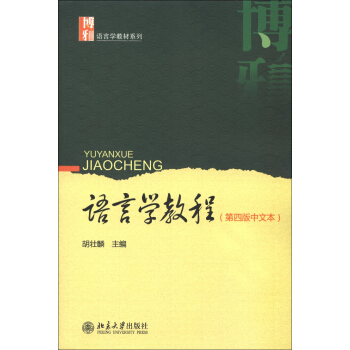

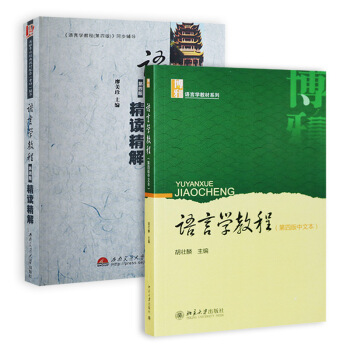
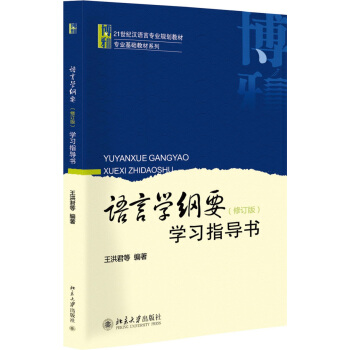
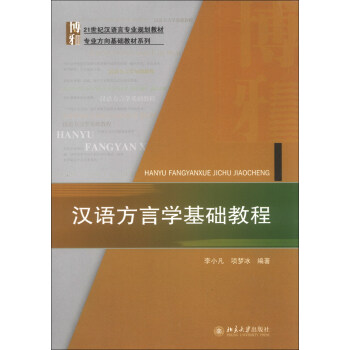
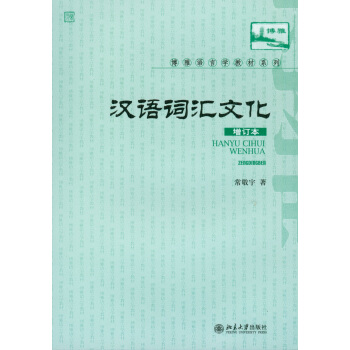
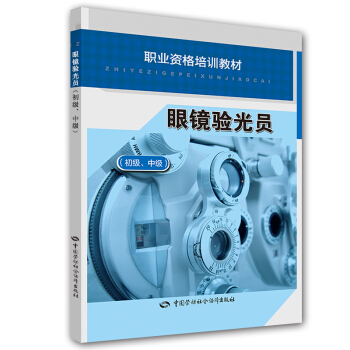
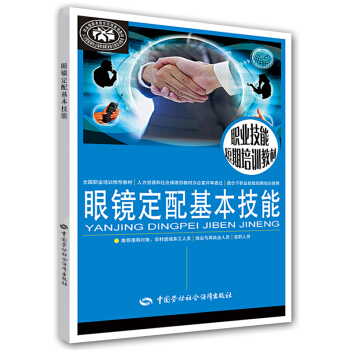
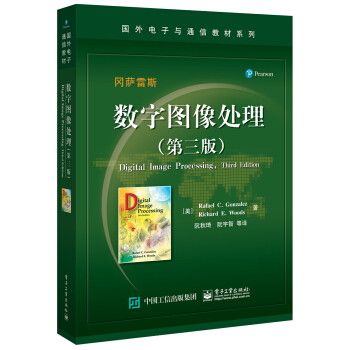
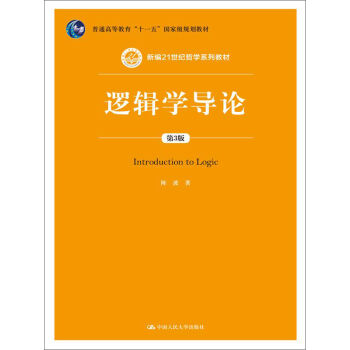

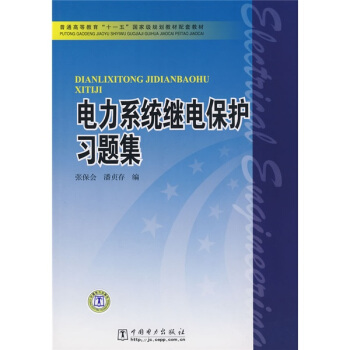
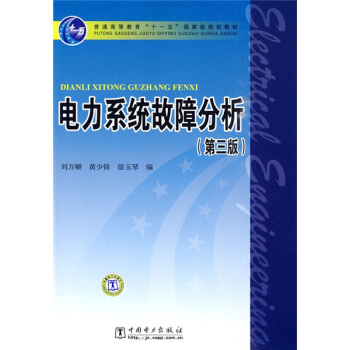
![普通高等教育“十一五”国家级规划教材 电力系统继电保护(第二版) [已出新印次,见京东编码:12351462] pdf epub mobi 电子书 下载](https://pic.tinynews.org/12351462/5b037360N85c5870e.jpg)
